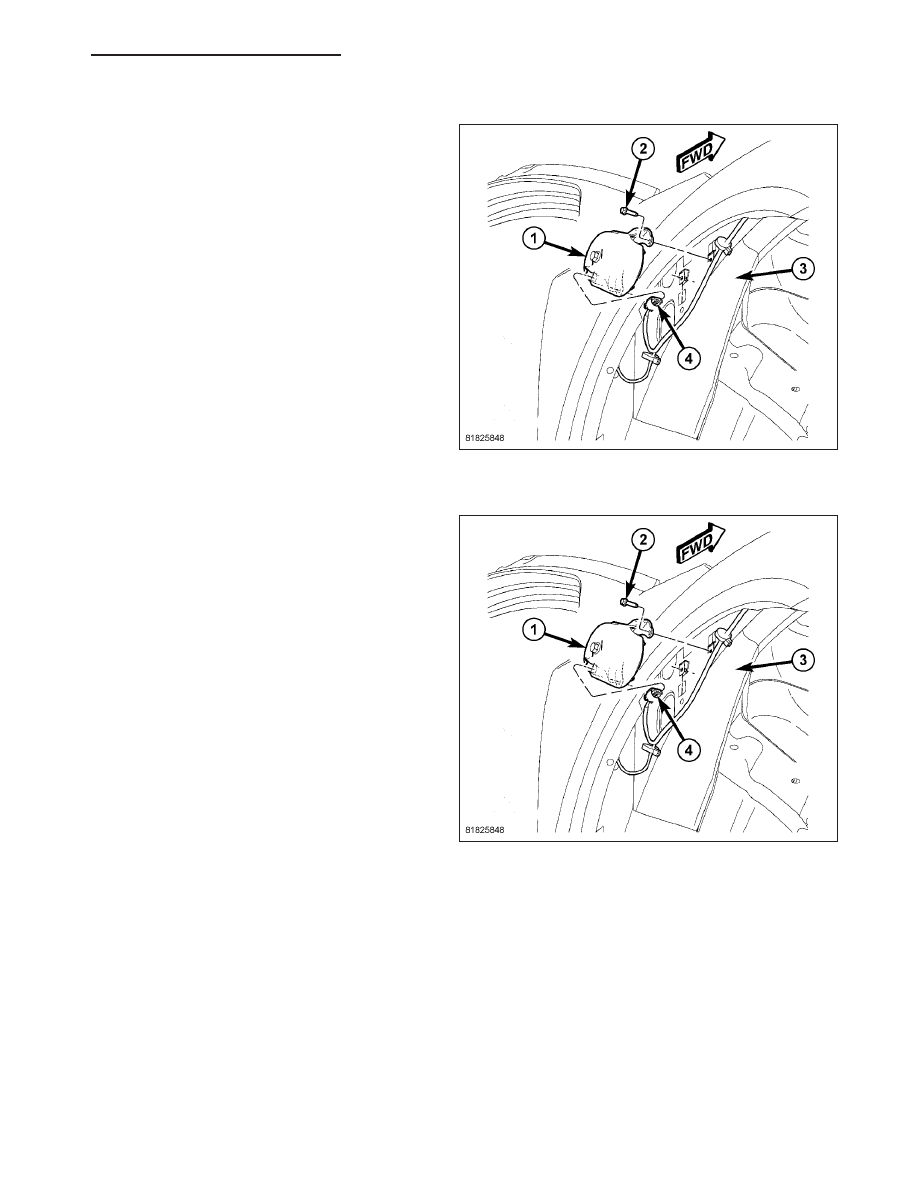Dodge Caliber. Manual - part 532

REMOVAL
1. Disconnect and isolate the battery negative cable.
2. Remove the right front wheel well splash shield
(Refer to 23 - BODY/EXTERIOR/FRONT END
SPLASH SHIELDS - REMOVAL).
3. Disconnect the electrical connector (4).
4. Remove the siren retaining screws (2) and remove
the siren (1) from the load form (3).
INSTALLATION
1. Position siren (1) on load form and install retaining
screws (2).
2. Connect the siren electrical connector (4).
3. Install the right front wheel well splash shield
(Refer to 23 - BODY/EXTERIOR/FRONT END
SPLASH SHIELDS - INSTALLATION).
4. Connect the battery negative cable.
PM
VEHICLE THEFT SECURITY - SERVICE INFORMATION
8Q - 105